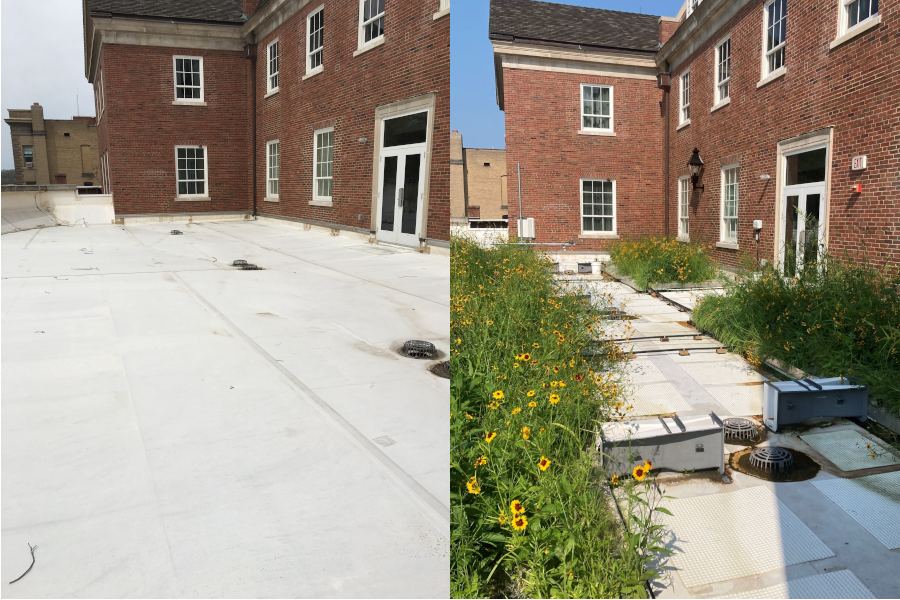Schoonover Center was remodeled in 2013 with a new rooftop built to hold a green roof, although it was not planted then. In the fall of 2017, an interdisciplinary group of faculty began working to install a green roof on campus that could be used by students and faculty for research and educational activities. Scripps College was a willing partner in converting their unplanted rooftop to a green roof.
Grants were written to PepsiCo Zero Impact Fund and the Academic Innovation Accelerator to acquire funding for the green roof installation. PACE and 1804 grants have been supporting student employees who have helped us advance the project. Students and faculty across the university began developing art, communication, engineering and research projects, well before the installation began.
A new student organization, the Green Initiative, was formed in February 2020 with tremendous energy dedicated to promoting green infrastructure through media, research, outreach and advocacy.
After a couple years of planning and a delay in the planting due to the novel coronavirus, the rooftop was transformed into a green roof in early July 2020. Student projects have continued to take shape, even as the university has instituted essential safety precautions during the pandemic.
Use this website to learn more about green roofs, green infrastructure and sustainability and to find resources for your classroom or ideas for projects. The history of this green roof endeavor will continue to grow as we envision a green-filled future. Check back often!

